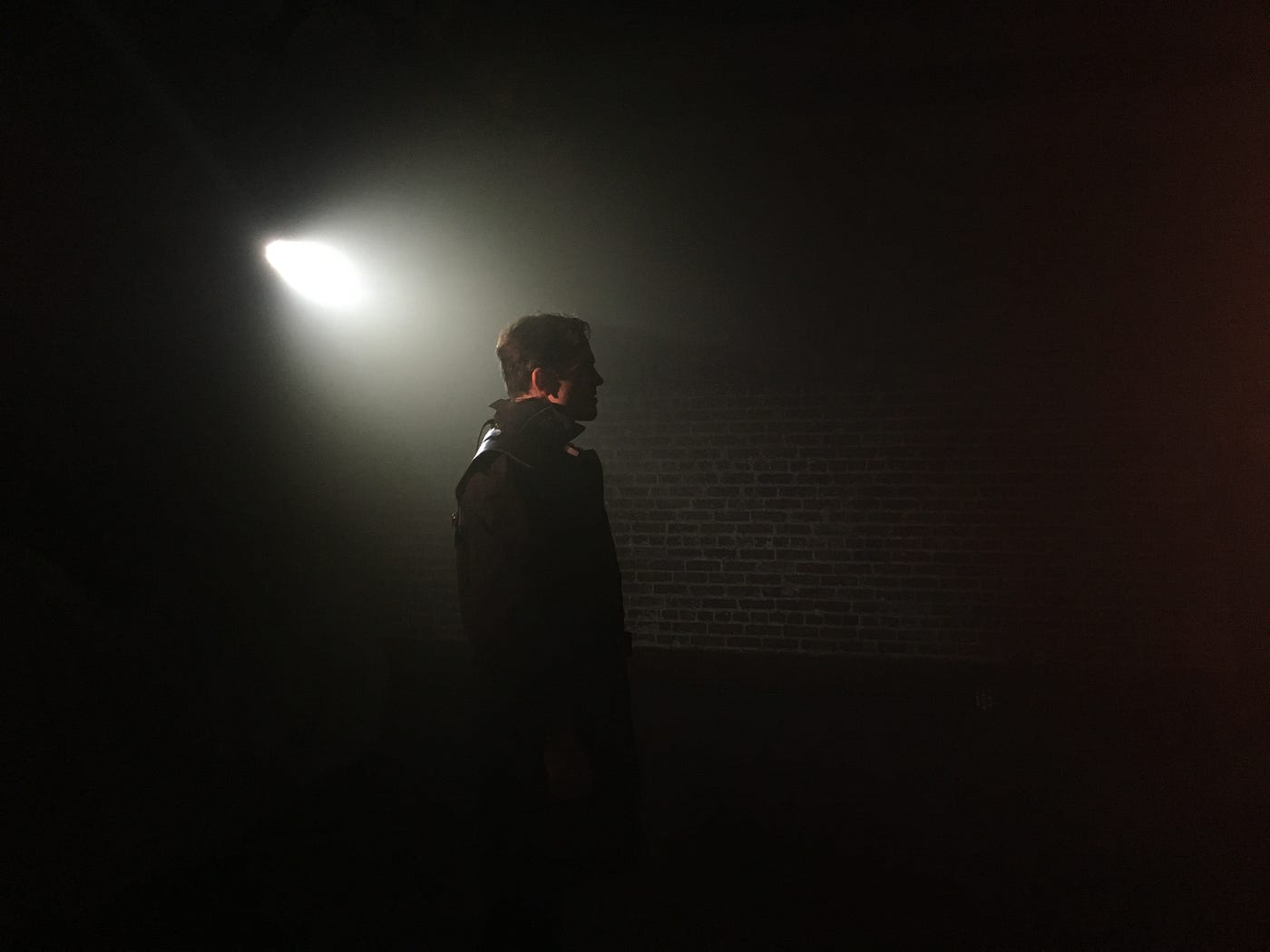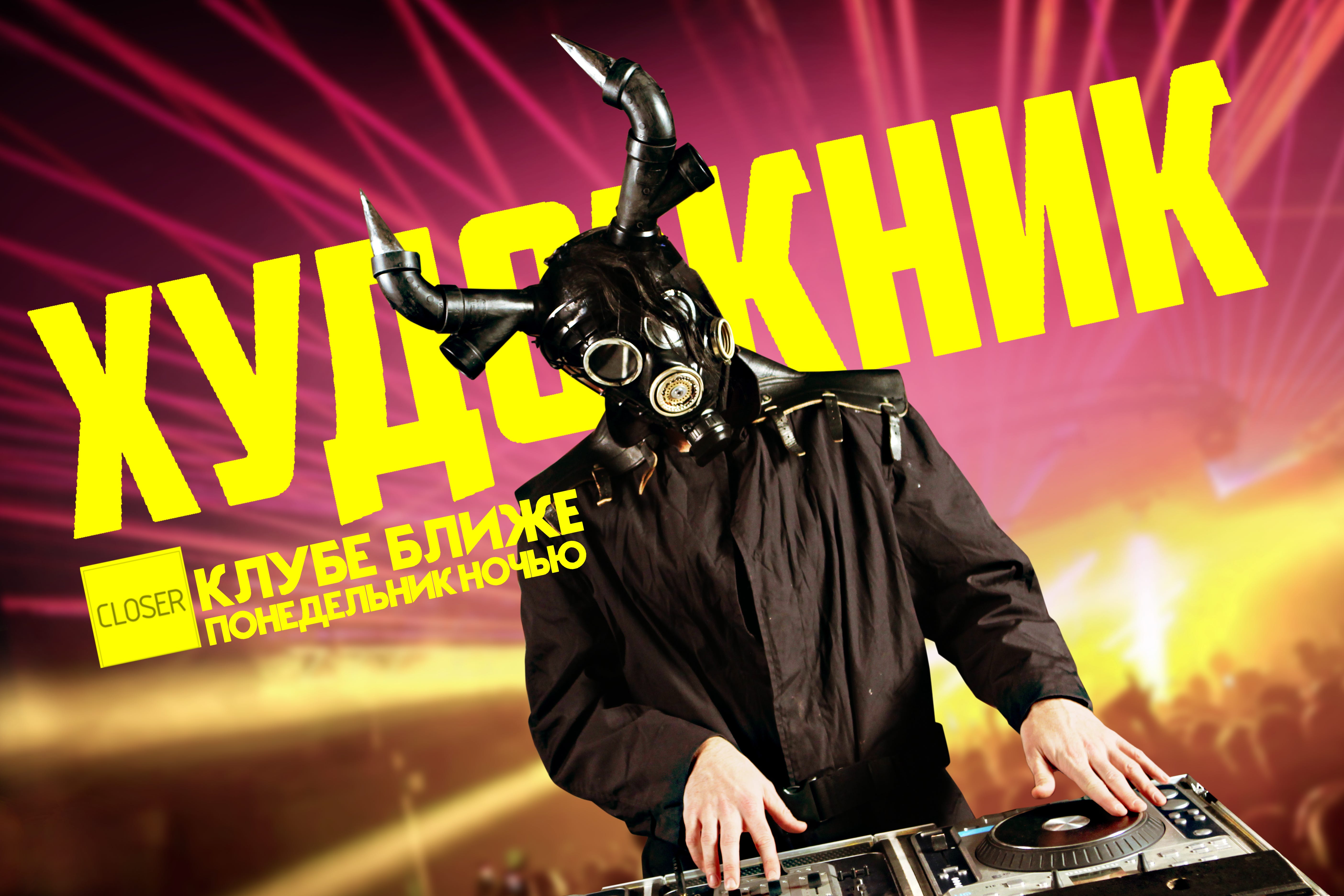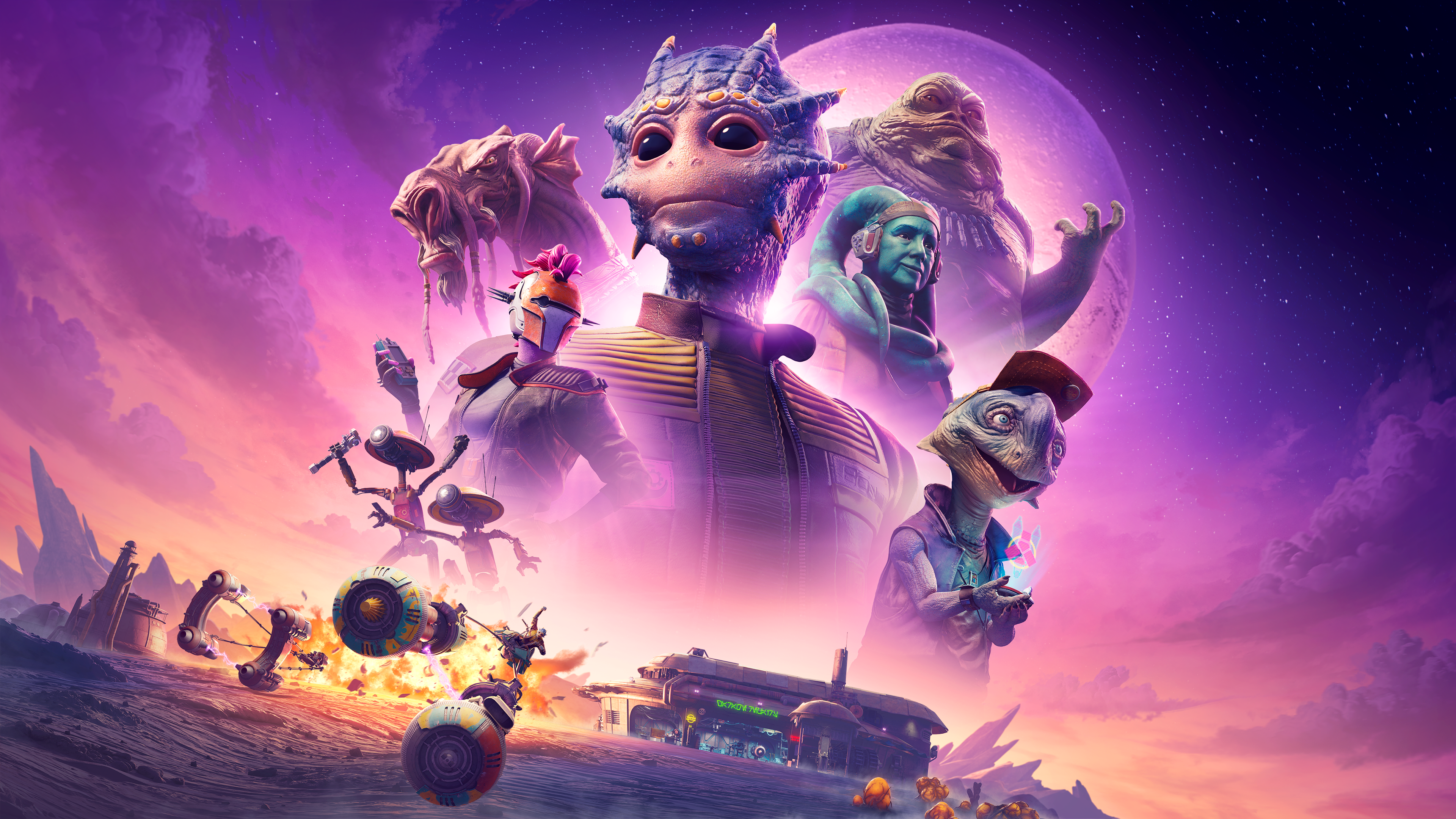
I’m lost. Or at least I think I’m lost. I check the address on my phone, and look up at the one over the door to make sure they match. It appears that I’ve got the right place, and so, I open up an unassuming door in Koreatown and step into: someone’s loft bedroom. I do a double take, and realize that I’ve stepped into a corner of Ukraine and the world of Amos: A Play With Music.
The room is akin to a slice-of-life art installation: there’s a modest, rumpled bed, posters, knick-knacks, empty beer bottles, and the detritus of someone who spends too much time partying hard, and too little cleaning. EDM and trance music echoes softly through the space, flowing from unseen speakers. I’m studying the Ukrainian words spray painted on the wall as I’m welcomed to the party, handed a drink ticket, and encouraged to move things around, and explore.
I take a quick tour around the room, and discover that it’s not one apartment, but two distinct dwellings — one that belongs to a popular Ukrainian DJ, and the other to someone who is clearly traveling abroad, studying the city of Kiev.

I make my way to the bar, and am greeted by the bartender, a woman with a thick and oddly familiar Eastern European accent, which reminds me immediately of one of my old college roommates: her words come in the same, halting, tight-lipped speech his did after a night out. After some chit chat, we toast with a shot of vodka, and I make my way, beer in hand, to explore.
I start poring through the tchotchkes that abound, translating notes, sifting through newspaper clippings, books, bags, and notebooks, and with each new item I paw over, the space becomes more intimate, more real and less of an art installation. With each new thing I notice, the deeper I find myself falling into the nebula of a story. Now I’m lost, deep somewhere in Kiev, at someone’s odd house party, and I’m invading someone’s privacy, trying on someone else’s life — two other people’s lives.
I’m broken from my trance by a murmur coming from the gathering crowd — I’ve momentarily forgotten that I’m not just at a house party. An awkward figure, clutching a dark jumble of plastic — a mask — pushes through the crowd, opens a door, and exits the party.
Get Anthony Robinson’s stories in your inbox
Join Medium for free to get updates from this writer.
SubscribeSubscribe
After a brief moment, we all follow through the door, and find ourselves in another loft apartment, or is it the dance floor of a rave? Or is it both? There is a driving beat filling the room, while images of city life, raves, and bits of words are projected on the walls. At the center of it all, is that same awkward figure — Amos (Michael Cassady) — sprawled on top of a large freezer chest, his hands clad in red-stained rubber gloves.
Amos sits up as the music begins to pulse in earnest, and he pushes through the crowd like we are just so many cobwebs. He notices our existence, but never really acknowledges us.
He clicks on a handheld recorder, and begins spinning the story of how he came to visit Kiev while on a gap year from college only to develop a relationship — nay, obsession — with an accomplished, masked DJ known to him only as The Artist (also played by Michael Cassady). I smile, realizing that this is going to be like nothing I was expecting, and I allow myself to get lost in the telling.

With Amos: A Play With Music, creators Eva Anderson and Michael Cassady have given us an experience that delves into the complex nature of identity, the interplay between love and lust, and the power of narrative in shaping the divide between lies and truth. The work explores drug use, inspiration, madness, and the crushing hold of obsession. They’ve penned an honest, intimate, music-bound narrative that carefully walks the line between funny and serious, dance party and thriller.
What’s more, music is the driving core of the show, both in how it’s used and its importance to the characters and their relationship to each other. The music is ever present, a character in its own right; its weight is felt even in the show’s quiet moments. Michael Cassady’s original songs flow organically in and out of the show, with him even creating live musical loops as he effortlessly flows back and forth between playing two different characters.
What’s most impressive is how well Amos’ story is integrated in the sandbox/installation at the front end of the show, and how it reappears in the play itself as little callbacks in the dialogue that pop out like flashbacks, or cinematic inserts — not just Easter Eggs, but integral parts of the greater story. Smartly, Amos allows us to come back to the initial rooms at the end of the show, to look at them with different and newly informed eyes. I kicked myself a couple of times for having not noticed things the first time around.
But then, I was busy being lost in the tale, just on the edge of exploding into dance.
Amos: A Play With Music continues through November 18 at 4414 W 2nd St, LA 90004. The party beginning at 8pm; the show at 9pm. Tickets are $40 and can be purchased online. Our review of the workshop production is here.
No Proscenium is a labor of love made possible by our generous backers like you: join them on Patreon today!
In addition to the No Proscenium web site, our podcast, and our newsletters, you can find NoPro on Twitter, Facebook, YouTube, Instagram, and in our online community Everything Immersive.















Discussion